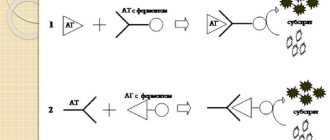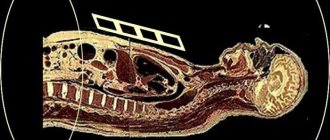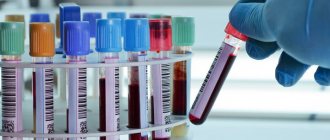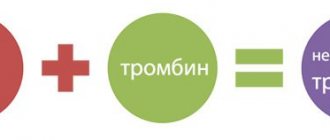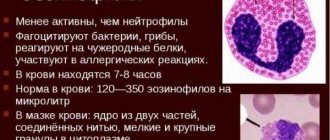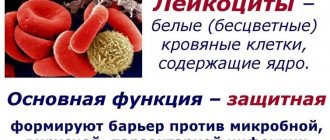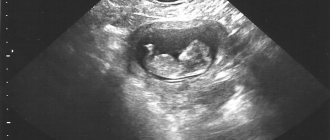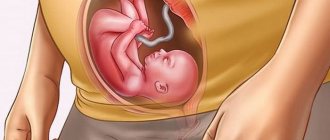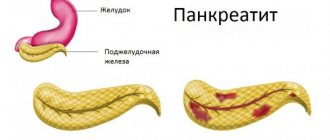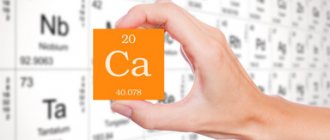What does an ecg of the heart show in an adult? Cardiogram is a word formed from two stems, literally meaning “recording of the heart.” When Willem Einthoven developed a method for determining the condition of the heart from the waves of an electrocardiogram almost a hundred years ago, this became a real breakthrough in cardiology. Now any study for the presence of vascular and heart pathology begins with a review of what the electrocardiogram of the heart shows in an adult.
As soon as a person has problems with the heart or blood vessels, the first-priority test prescribed by a cardiologist or phlebologist is an electrocardiogram. This is a proven diagnostic technique in which, based on the readings recorded by the recorder on the tape, you can get a clear picture of the activity of an important human organ.
What does an electrocardiogram consist of?
An ECG study consists of the following indicators:
- Wave R. Responsible for contractions of the left and right atria.
- PQ (R) interval is the distance between the R wave and the QRS complex (the beginning of the Q or R wave). Shows the duration of impulse travel through the ventricles, His bundle and atrioventricular node back to the ventricles.
- The QRST complex is equal to the systole (moment of muscle contraction) of the ventricles. The excitation wave propagates at different intervals in different directions, forming Q, R, S waves.
- Wave Q. Shows the beginning of the propagation of the impulse along the interventricular septum.
- Wave S. Reflects the end of the distribution of excitation through the interventricular septum.
- Wave R. Corresponds to the distribution of impulses along the right and left ventricular myocardium.
- Segment (R) ST. This is the path of the impulse from the end point of the S wave (in its absence, the R wave) to the beginning of the T.
- Wave T. Shows the process of repolarization of the ventricular myocardium (raising the gastric complex in the ST segment).
The video discusses the main elements that make up an electrocardiogram. Taken from the MEDFORS channel.
What does a cardiogram show?
Unlike other organs, the heart muscle has unique functions: automaticity, conductivity, excitability and contractility. These features allow the organ to contract at regular intervals, resulting in continuous blood flow.
In the process of electrocardiography, the electrophysiological work of the heart muscle is examined using a special device - a cardiograph.
The procedure lasts no longer than 10 minutes and can take place in a clinic.
The patient is placed on the couch. Next, electrodes are attached to his arms, legs and in the heart area. After turning on the device, the electrical activity of the heart is recorded using a special thermal film.
The resulting graphical curve contains peaks and valleys.
The teeth are designated using capital Latin letters P, Q, R, S, T
Decoding the cardiogram includes studying the size, width and height of each tooth, as well as the distance between them.
A cardiogram shows the slightest changes in the functioning of the heart.
How to decipher a cardiogram
You can read the ECG yourself, taking into account the following knowledge:
- Age and gender.
- Cells on paper consist of horizontal and vertical lines with large and small cells. Horizontal ones are responsible for frequency (time), vertical ones are voltage. A large square is equal to 25 small ones, each side of which is 1 mm and 0.04 seconds. The large square corresponds to 5 mm and 0.2 seconds, and 1 cm of the vertical line is 1 mV of voltage.
- The anatomical axis of the heart can be determined using the direction vector of the Q, R, S waves. Normally, the impulse should be conducted through the ventricles to the left and down at an angle of 30-70º.
- The reading of the teeth depends on the vector of the excitation wave distribution on the axis. The amplitude differs in different leads, and part of the pattern may be missing. The upward direction from the isoline is considered positive, downward - negative.
- The electrical axes of leads Ι, ΙΙ, ΙΙΙ have different locations relative to the axis of the heart, correspondingly appearing with different amplitudes. Leads AVR, AVF and AVL show the difference in potential between the limbs (with a positive electrode) and the average potential of the other two (with a negative one). The AVR axis is directed from bottom to top and to the right, so most of the teeth have a negative amplitude. The AVL lead runs perpendicular to the electrical axis of the heart (EOS), so the total QRS complex is close to zero.
Interference and sawtooth vibrations (frequency up to 50 Hz) displayed in the picture may indicate the following:
- muscle tremors (small vibrations with different amplitudes);
- chills;
- poor contact between skin and electrode;
- malfunction of one or more wires;
- interference from household electrical appliances.
Registration of cardiac impulses occurs using electrodes that connect the electrocardiograph to the human limbs and chest.
The paths followed by the discharges (leads) have the following designations:
- Ι;
- ΙΙ;
- ΙΙΙ;
- AVL (analogue of the first);
- AVF (analogue of the third);
- AVR (mirror display of leads).
Designations of chest leads:
- V1;
- V2;
- V3;
- V4;
- V5;
- V6.
Teeth, segments and intervals
You can independently interpret the meaning of the indicators using ECG standards for each of them:
- Wave P. Should have a positive value in leads Ι-ΙΙ and be biphasic in V1.
- PQ interval. Equal to the sum of the time of contraction of the cardiac atria and their conduction through the AV node.
- The Q wave must come before R and have a negative value. In compartments Ι, AVL, V5 and V6 it can be present with a length of no more than 2 mm. Its presence in lead ΙΙΙ should be temporary and disappear after a deep breath.
- QRS complex. It is calculated by cells: normal width is 2-2.5 cells, interval is 5, amplitude in the thoracic region is 10 small squares.
- ST segment. To determine the value, you need to count the number of cells from the J point. Normally, there are 1.5 (60 ms).
- The T wave must coincide with the direction of the QRS. It has a negative value in leads: ΙΙΙ, AVL, V1 and standard positive - Ι, ΙΙ, V3-V6.
- U wave. If this indicator is displayed on paper, it can occur in close proximity to the T wave and merge with it. Its height is 10% of T in sections V2-V3 and indicates the presence of bradycardia.
How to count your heart rate
The heart rate calculation scheme looks like this:
- Identify tall R waves on an ECG image.
- Find the large squares between the vertices R is the heart rate.
- Calculate using the formula: heart rate = 300/number of squares.
For example, there are 5 squares between the vertices. Heart rate=300/5=60 beats/min.
Photo gallery
Notation for deciphering the study
The picture shows normal sinus rhythm of the heart.
Atrial fibrillation class=”aligncenter” width=”616″ height=”437″[/img]Method for determining heart rate
The photo shows the diagnosis of coronary heart disease
Myocardial infarction on the electrocardiogram
What affects the accuracy of indicators
Sometimes the results of a cardiogram may be erroneous and differ from previous studies. Errors in results are often associated with many factors. These include:
- incorrectly attached electrodes. If the sensors are poorly attached or become dislodged during an ECG, the test results can be seriously affected. That is why the patient is recommended to lie still during the entire period of taking the electrocardiogram;
- extraneous background. The accuracy of the results is often influenced by extraneous devices in the room, especially when the ECG is performed at home using mobile equipment;
- smoking, drinking alcohol. These factors affect blood circulation, thereby changing the cardiogram parameters;
- meal. Another reason that affects blood circulation and, accordingly, the correctness of indicators;
- emotional experiences. If the patient is worried during the study, this may affect the heart rate and other indicators;
- Times of Day. When conducting a study at different times of the day, the indicators may also differ.
The specialist must take into account the above-described nuances when interpreting the ECG; if possible, they should be excluded.
What is an abnormal ECG
An abnormal electrocardiogram is a deviation of the test results from the norm. The doctor’s job in this case is to determine the level of danger of anomalies in the transcript of the study.
Abnormal ECG results may indicate the following problems:
- the shape and size of the heart or one of its walls are noticeably changed;
- imbalance of electrolytes (calcium, potassium, magnesium);
- ischemia;
- heart attack;
- change in normal rhythm;
- side effect from medications taken.
In what cases is an ECG prescribed?
The cardiologist issues a referral if the patient has the following primary complaints:
- pain in the heart, back, chest, abdomen, neck;
- swelling in the legs;
- dyspnea;
- fainting;
- interruptions in heart function.
If there is a sudden appearance of sharp pain in the heart area, you should immediately take an ECG!
Regular ECG recording is considered mandatory for the following diagnosed diseases:
- suffered a heart attack or stroke;
- hypertension;
- diabetes;
- rheumatism.
An ECG is mandatory when preparing for operations, monitoring pregnancy, and during a medical examination of pilots, drivers, and sailors. The result of a cardiogram is often required when applying for a voucher for sanatorium treatment and issuing permits for active sports activities. For preventive purposes, even in the absence of complaints, it is recommended to take an ECG annually for everyone, especially people over 40 years of age. This often helps diagnose asymptomatic heart disease.
The heart works tirelessly all its life. Take care of this amazing organ without waiting for its complaints!
What does an ECG look like normally and with pathology?
Electrocardiogram parameters in adult men and women are presented in the table and look like this:
| ECG parameters | Norm | Deviation | Probable cause of deviation |
| RRR distance | Even spacing between teeth | Uneven distance |
|
| Heart rate | 60-90 beats/min at rest | Below 60 or above 90 beats/min at rest |
|
| Atrial contraction - R wave | Directed upward, outwardly resembles an arc. The height is about 2 mm. May not be present in ΙΙΙ, AVL, V1. |
|
|
| PQ interval | A straight line between the PQ teeth with an interval of 0.1-0.2 seconds. |
|
|
| QRS complex | Length 0.1 second - 5 mm, then T wave and straight line. |
|
|
| Q wave | Absent or directed downward with a depth equal to 1/4 of the R wave | Depth and/or width exceeding normal |
|
| R wave | Height 10-15 mm, pointing upward. Present in all leads. |
|
|
| S wave | Depth 2-5 mm, sharp end pointing down. |
| Left ventricular hypertrophy. |
| ST segment | Coincides with the distance between the ST teeth. | Any deviation of the horizontal line greater than 2 mm. |
|
| T wave | The height of the arc is up to 1/2 of the R wave or coincides (in the V1 segment). Direction - up. |
|
|
What kind of cardiogram should a healthy person have?
Indications of a good cardiogram for an adult:
| Prong | Lead | Description |
| R |
| Positive. |
| R | AVR | Negative. |
| T | AVR | Negative. |
| R | V1-V4 | Increase in amplitude. |
| R | V5-V6 | Reducing the swing of oscillations. |
| S | V1-V6 | Reduction until complete disappearance. |
| RST segment | On the isoline. | Error no more than 0.5 mm |
The video compares the cardiogram of a healthy and sick person and provides the correct interpretation of the data obtained. Taken from the channel “Life of a Hypertensive”.
Indicators in adults
An example of a normal ECG in adults:
| ECG indicators | Norm |
| QRS | 0.06-0.1 sec |
| P | 0.07-0.11 sec |
| Q | 0.03 sec |
| T | 0.12-0.28 sec |
| PQ | 0.12-0.20 sec |
| Heart rate | 60-80 beats/min |
Indicators in children
Electrocardiogram parameters in children:
| ECG indicators | Norm |
| QRS | 0.06-0.1 sec |
| P | No more than 0.1 sec |
| Q | 0.2 sec |
| QT | No more than 0.4 sec |
| Heart rate |
|
How to “read” myocardial infarction on an ECG?
Students starting to study cardiology often have a question: how to learn to read a cardiogram correctly and identify myocardial infarction (MI)? You can “read” a heart attack on a paper tape based on several signs:
- ST segment elevation;
- peaked T wave;
- deep Q wave or lack thereof.
When analyzing electrocardiography results, these indicators are first identified, and then the others are dealt with. Sometimes the earliest sign of acute myocardial infarction is only a peaked T wave. In practice, this is quite rare because it appears only 3-28 minutes after the onset of a heart attack.
Peaked T waves should be distinguished from peaked T waves associated with hyperkalemia. In the first few hours, the ST segments usually rise. Pathological Q waves may appear within a few hours or after 24 hours.
Long-term ECG changes such as persistent Q waves (93% of cases) and spiky T waves are common. Sustained ST segment elevation is rare except in ventricular aneurysms.
Indicators of myocardial infarction on ECG
There are widely researched clinical solutions, such as the TIMI score, that help predict and diagnose myocardial infarction based on clinical data. For example, TIMI scores are often used to predict the status of patients with symptoms of MI. Based on symptoms and electrocardiographic findings, practitioners can differentiate between unstable angina and MI in the emergency setting.
Rhythm disturbances during ECG interpretation
Heart rhythm disturbances can be observed in healthy people and are a normal variant. The most common types of arrhythmia and conduction system deviation. In the process of interpreting the data obtained, it is important to take into account all indicators of the electrocardiogram, and not each individually.
Arrhythmias
Heart rhythm disturbances can be:
- Sinus arrhythmia. Fluctuations in RR amplitude vary within 10%.
- Sinus bradycardia. PQ=12 seconds, heart rate less than 60 beats/min.
- Tachycardia. The heart rate in adolescents is more than 200 beats/min, in adults it is more than 100-180. During ventricular tachycardia, the QRS indicator is above 0.12 seconds, while sinus tachycardia is slightly higher than normal.
- Extrasystoles. Extraordinary contraction of the heart is permissible in isolated cases.
- Paroxysmal tachycardia. Increase in heart rate to 220 per minute. During an attack there is a fusion of QRS and P. The range between R and P from the next beat
- Atrial fibrillation. Atrial contraction is 350-700 per minute, ventricular contraction is 100-180 per minute, P is absent, fluctuations along the isoline.
- Atrial flutter. Atrial contraction is 250-350 per minute, gastric contractions become less frequent. Sawtooth waves in sections ΙΙ-ΙΙΙ and V1.
Deviation of EOS position
Health problems may be indicated by a shift in the EOS vector:
- Deviation to the right is more than 90º. In combination with the excess of the height of S over R, it signals pathologies of the right ventricle and His bundle block.
- Deviation to the left by 30-90º. With a pathological ratio of the heights of S and R - left ventricular hypertrophy, bundle branch block.
Deviations in the position of the EOS can signal the following diseases:
- heart attack;
- pulmonary edema;
- COPD (chronic obstructive pulmonary disease).
Violation of the conduction system
The ECG conclusion may include the following conduction function pathologies:
- AV block of the 1st degree - the distance between the P and Q waves exceeds the interval of 0.2 seconds, the sequence of the path looks like this - PQRS;
- AV block of the 2nd degree - PQ displaces the QRS (Mobitz type 1) or the QRS falls along the length of the PQ (Mobitz type 2);
- complete AV block - the frequency of contractions of the atria is greater than that of the ventricles, PP=RR, the length of PQ is different.
Selected heart diseases
A detailed interpretation of the electrocardiogram may show the following pathological conditions:
| Disease | Manifestations on the ECG |
| Cardiomyopathy |
|
| Mitral stenosis |
|
| Mitral valve prolapse |
|
| Chronic pulmonary obstruction |
|
| CNS damage |
|
| Hypothyroidism |
|
Myocardial hypertrophy
Chronic overload of the heart muscle, which is caused by certain diseases, physical overload and bad habits, leads to thickening of its individual sections and stretching of the heart chambers (hypertrophy). Hypertrophy is not an independent disease; it is a syndrome of another heart pathology, worsening its prognosis.
The pathology may not manifest itself for a long time and lead to sudden death. It may also manifest itself as: shortness of breath, chest pain, heart rhythm disturbances, fainting, swelling. Subdivided:
- for left ventricular hypertrophy (LVH), which accompanies arterial hypertension, aortic valve stenosis, hypertrophic cardiomyopathy, excessive physical activity;
- hypertrophy of the right ventricle with chronic pulmonary hypertension, narrowing of the pulmonary valve opening, congenital heart defects, etc.;
- left atrial hypertrophy caused by heavy physical activity, hypertension, cardiomyopathy, mitral and aortic stenosis and other pathologies;
- hypertrophy of the right atrium, accompanying pulmonary pathology (emphysema, chronic obstructive pulmonary disease), chest deformation, etc.
Cardiac hypertrophy is also observed when the electrical axis of the heart deviates to the left or right, as well as during systolic overload.
Video
The video course “Everyone Can Do an ECG” discusses heart rhythm disturbances. Taken from the MEDFORS channel.
Do you have any questions? Specialists and readers of the HROMOSOMA website will help you ask a question
Was this article helpful?
Thank you for your opinion!
The article was useful. Please share the information with your friends.
Yes (100.00%)
No
X
Please write what is wrong and leave recommendations on the article
Cancel reply
Rate the benefit of the article: Rate the author ( 2 votes, average: 5.00 out of 5)
Discuss the article:
Features of a child's ECG
Among the main differences, the following should be noted:
- The heart rate up to 3 years is on average 110 beats/min, at five years the heart rate decreases slightly; in adolescents, this parameter reaches values that are considered normal in adults (60–90 beats).
- the P wave in children is not higher than 0.1 s;
- the QRS complex is 0.6 – 0.1 s;
- electric axle without any changes;
- the QRST interval is no more than 0.4 s, and the PQ interval is 0.2 s.
Before reading the cardiogram, you should consider that there are many factors that can affect the results of the examination. Among them are:
- technical failures;
- incorrect placement of electrodes;
- improper preparation for the examination; before taking an ECG, it is forbidden to eat a lot or, for example, drink drinks (coffee, alcohol, strong tea) that can affect heart rate; Physical activity and stressful situations should also be avoided.
How to properly prepare for an ECG or technique for taking an electrocardiogram
In order to pass the test correctly, you need to understand that any excitement, excitement and worry will inevitably affect the results. Therefore, it is important to prepare yourself in advance.
Not acceptable
- Drinking alcohol or any other strong drinks (including energy drinks, etc.)
- Overeating (best to take on an empty stomach or have a light snack before going out)
- Smoking
- Using drugs that stimulate or suppress heart activity or drinks (such as coffee)
- Physical activity
- Stress
There are often cases when a patient, being late for the treatment room at the appointed time, began to worry greatly or frantically rushed to the treasured room, forgetting about everything in the world. As a result, its leaf was riddled with frequent sharp teeth, and the doctor, of course, recommended that his patient undergo the test again. However, in order not to create unnecessary problems, try to calm yourself as much as possible before entering the cardiology room. Moreover, nothing bad will happen to you there.
When the patient is invited, it is necessary to undress to the waist behind a screen (for women, remove their bra) and lie down on the couch. In some treatment rooms, depending on the suspected diagnosis, it is also necessary to free the body from the torso down to the underwear.
After that, the nurse applies a special gel to the lead sites, to which electrodes are attached, from which multi-colored wires are stretched to the reading machine.
Thanks to special electrodes, which the nurse places at certain points, the slightest cardiac impulse is detected, which is recorded using a recorder.
After each contraction, called depolarization, a tooth is displayed on the tape, and at the moment of transition to a calm state - repolarization, the recorder leaves a straight line.
Within a few minutes, the nurse will take a cardiogram.
The tape itself, as a rule, is not given to patients, but is handed directly to a cardiologist who decrypts it. With notes and transcripts, the tape is sent to the attending physician or transferred to the reception desk so that the patient can pick up the results himself.
But even if you pick up a cardiogram tape, you will hardly be able to understand what is depicted there. Therefore, we will try to lift the veil of secrecy a little so that you can at least assess the potential of your heart.
